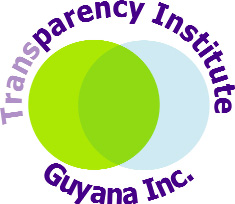 Definition of Transparency & Accountability
Definition of Transparency & Accountability
Transparency and accountability are words often uttered in the same breath, but what do they mean? Of what societal value are transparency and accountability and what do these necessitate?
A transparent object is one that lets light through so that one is able to see inside and through. In relation to transactions in society, transparency means that relevant information is readily available in a timely and user-friendly manner and that the information is complete and accurate. Both observers and those directly involved are therefore able to understand all facets of the transactions.
Transparency is to be the property or characteristic of a system or organisation. Where transparency is not a natural property it must be devised by organising the system for the purpose of being transparent.
Accountability is the state characterised by being answerable for one’s actions and compliant with obligatory accounting. The operators of an accountable system or organisation will (1) conform to the established rules for various transactions and (2) allow stakeholders to verify that they are operating it correctly. Accountability standards are usually accompanied by penalties for transgressions.
Transparency & Accountability Nexus
Transparency is insufficient to establish accountability since the available information may not provide answers to some important questions. Conversely, it is possible to satisfy accountability which comes after-the-fact but violates transparency. Transparency is therefore neither necessary nor sufficient for accountability though the two are mutually reinforcing.
Transparency and accountability are also localised to the specific transaction under consideration. To be simply transparent or simply accountable, an entity needs to be thus in all its transactions. However, transparency and or accountability are not entirely absent based on a proper subset of transactions. There are degrees that can be achieved.
Why Transparency & Accountability?
Transparency and accountability are both safeguards against corruption. Transparency International defines corruption as “the abuse of entrusted power for private gain”. Transparency facilitates monitoring whereas accountability counters impunity and incentives for corruption. Moreover, transparency enables stakeholders to identify opportunities for corruption which can lead to a strengthening of the parameters of transactions.
But though they are safeguards, transparency and accountability do not guarantee the absence of corruption or that all corrupt acts will be sanctioned. On the one hand, their effects can be confounded by poor enforcement which may be due to lack of political and societal will. On the other hand, transparency and accountability operate within the limits of the law of the land thereby conferring on them some degree of context specificity. In addition to this, improvements in transparency and accountability force adaptation in those bent on corruption thereby potentially making detection and sanctioning even more challenging.
However, it is important to understand that the benefits of improved transparency and accountability outweigh the limitations. Greater transparency and accountability raise the bar and cut out many forms of corruption. Transparency and accountability are also associated with improved trust in institutions which in turn promotes societal wellbeing and citizen conformity to rules and regulations such as paying taxes. When corruption is low, there is also improved likelihood of attracting foreign investments though this involves more than just low corruption. Overall, the country and society stand to benefit from high levels of transparency and accountability.
Given that new and reformulated threats may emerge with improved transparency and accountability, flexible frameworks with provisions for updating standards are best. Pressure from citizens and citizen organisations can motivate changes to the laws to guarantee stricter standards. In the final analysis, we must remain vigilant to restore and improve transparency after the opacity created by those bent on corruption.
Lack of Transparency & Accountability in Public Undertakings in 2016
Over the last year, we have witnessed opacity and lack of accountability in relation to several public undertakings. The D’Urban Park and the Parking Meters for Georgetown projects and the Pharmaceutical Bond deal are excellent examples of public undertakings that leave much to be desired in relation to transparency and accountability.
These undertakings have failed the completeness and timeliness requirements of transparency since much of what is known about their execution was learnt after-the-fact and the public is still without information on some critical issues. For example, the contract with the people of Georgetown for the parking meters in Georgetown has still not been released to the people of Georgetown. In addition to these flaws, the Pharmaceutical Bond deal fails the accuracy requirement since there was no emergency and the indicated costs of the facilities were incorrect.
There were also salient examples of accountability failures in public undertakings in 2016. The absence of open tendering in the Pharmaceutical Bond deal was a violation of the Public Procurement Act. In addition, the incorrect information provided to parliament and the cover-up of the identities of the architects of the deal are glaring accountability shortcomings. In relation to the D’Urban Park project, much is still unknown. However, the omissions and apparent disinterest in providing complete information underscores poor understanding of obligatory accounting. One would also recall, the trip by the Minster of State to China. Whenever attempts to obtain answers turn into a fiasco, accountability is threatened.
The necessity of Access to Information
Access to information is the lifeblood of transparency and accountability and hence ultimately of efforts to root out corruption. If either relevant information remains concealed or the rules governing access are weak, the monitoring function of the citizens is thwarted and the corrupt will be emboldened.
Guyana’s Access to Information Act was signed into law on September 27, 2011, and it provides for a Commissioner of Information (CoI) who functions as an intermediary between applicants and the agencies from or about which information is requested.
Under the Act, a Public Authority (PA) is allowed to classify documents into five security categories but only one of these categories is available to the public. There is no clearly articulated method or content requirement for these classifications making this entirely up to the discretion of the PA. This flexibility to classify and reclassify information is also evident in Trinidad and Tobago where the Freedom of Information Act was used to deny public access to information about the awards of government scholarships (Bagoo, July 6, 2008; Newsday). Guyana’s Access to Information Act institutes a conflict of interest at the PA that allows it to withhold information at its own discretion and concurrently articulates no consequence for denying a request. The Act also explicitly exempts a document if it would expose the PA to “disadvantage” without defining this term and most interestingly allows nondisclosure of a document due to “public interest”.
In spite of these provisions, requests for information must first get past the CoI. The CoI may refuse a request if the processing required would substantially and unreasonably divert the resources of the PA from its other operations. The CoI may also refuse a request if he/she lacks the resources to do the job. Getting past the CoI is essentially a matter of his/her goodwill – something in short supply for TIGI – and the Act again articulates no penalties for this individual.
The only recourse for a denial of information under the Act is the High Court. This is costly and will not provide a judgment in a timely manner and it is unlikely to be pursued by many. This is unlike the situation in Trinidad and Tobago (T&T) and Jamaica which have similar Acts but which provide for appeals to an Ombudsman then the High Court (in T&T) or to an Appeals Tribunal (in Jamaica) (Goolsarran, A. July 11, 2016; Accountability Watch).
Contrary to its name, the Access to Information Act provides protection for information. It appears to be concocted to frustrate citizens seeking publicly useful information by following circular logic and by ultimately setting the avenue for challenging decisions beyond the reach of most citizens.
The Access to Information Act should be scrapped and redone or at least amended if it is to reflect commitment to transparency and accountability.









